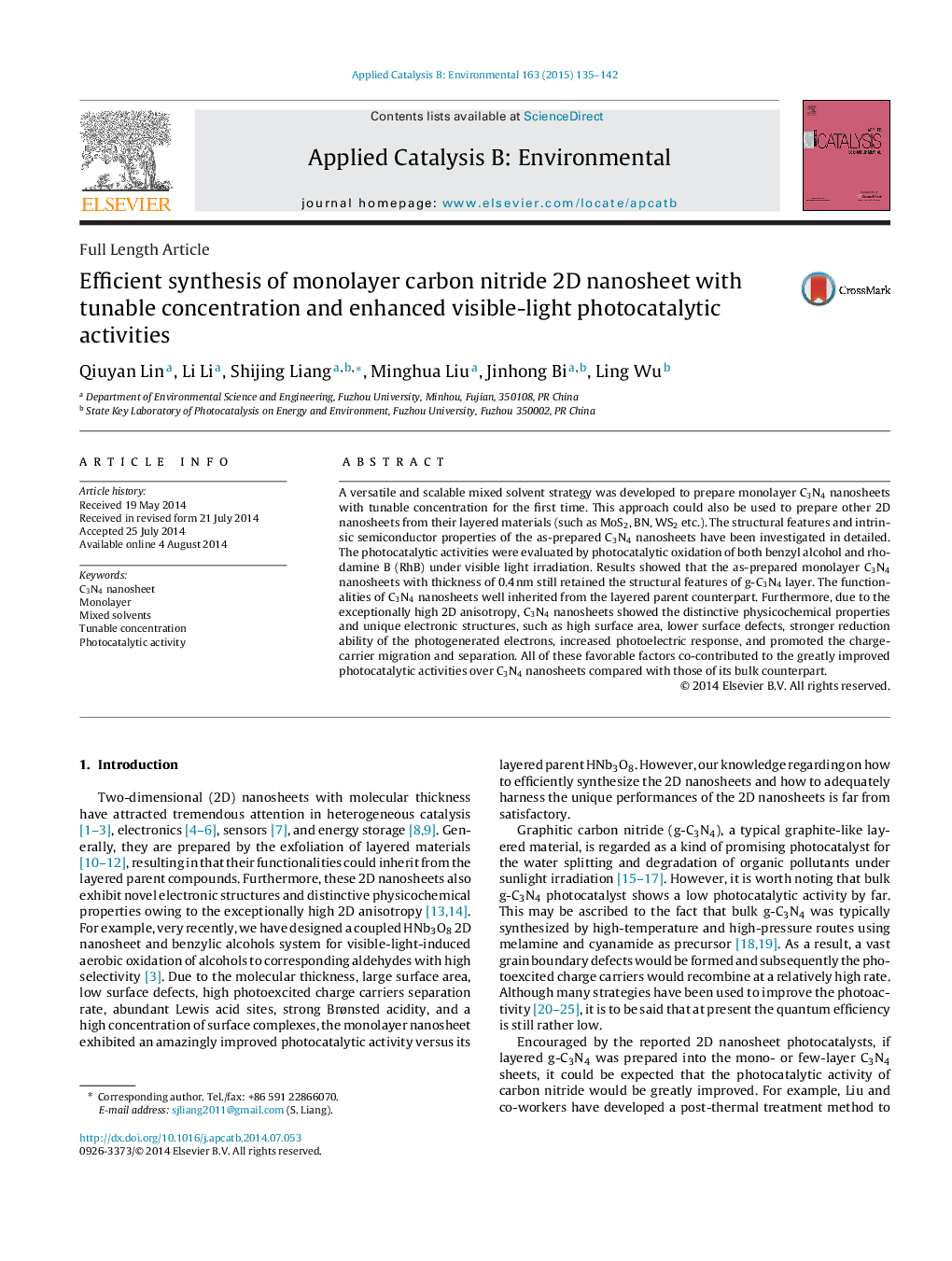| Article ID | Journal | Published Year | Pages | File Type |
|---|---|---|---|---|
| 44864 | Applied Catalysis B: Environmental | 2015 | 8 Pages |
•C3N4 nanosheet was prepared by a mixed solvents strategy for the first time.•The structural features of the C3N4 nanosheets have been investigated in detailed.•Nanosheet exhibits a greatly improved photocatalytic activity.•Relationship between photoelectric properties and photoactivity was investigated.•The origin of the improved photocatalytic activity was also discussed.
A versatile and scalable mixed solvent strategy was developed to prepare monolayer C3N4 nanosheets with tunable concentration for the first time. This approach could also be used to prepare other 2D nanosheets from their layered materials (such as MoS2, BN, WS2 etc.). The structural features and intrinsic semiconductor properties of the as-prepared C3N4 nanosheets have been investigated in detailed. The photocatalytic activities were evaluated by photocatalytic oxidation of both benzyl alcohol and rhodamine B (RhB) under visible light irradiation. Results showed that the as-prepared monolayer C3N4 nanosheets with thickness of 0.4 nm still retained the structural features of g-C3N4 layer. The functionalities of C3N4 nanosheets well inherited from the layered parent counterpart. Furthermore, due to the exceptionally high 2D anisotropy, C3N4 nanosheets showed the distinctive physicochemical properties and unique electronic structures, such as high surface area, lower surface defects, stronger reduction ability of the photogenerated electrons, increased photoelectric response, and promoted the charge-carrier migration and separation. All of these favorable factors co-contributed to the greatly improved photocatalytic activities over C3N4 nanosheets compared with those of its bulk counterpart.
Graphical abstractFigure optionsDownload full-size imageDownload as PowerPoint slide
